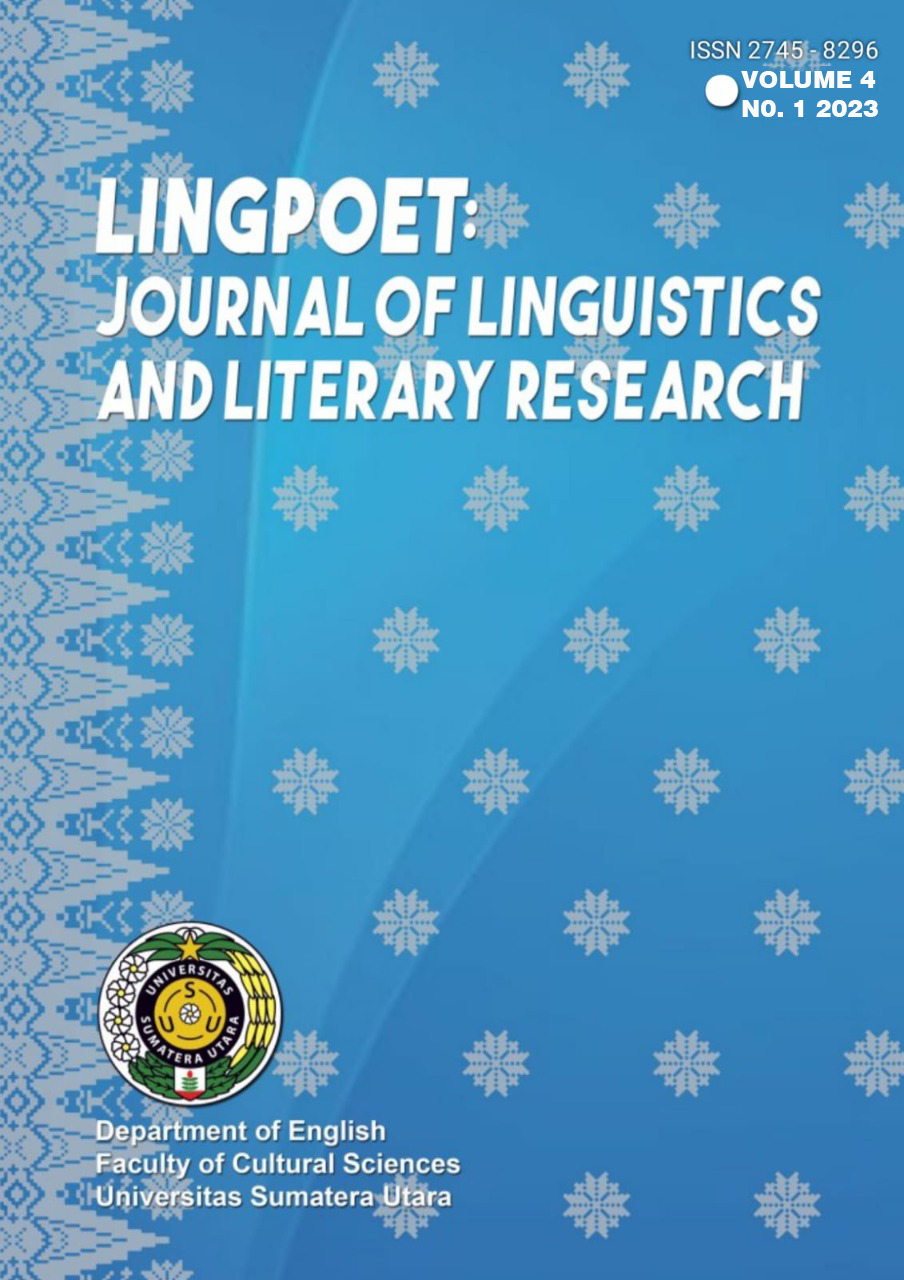Using Communicative Language Teaching to instruct ESL at the university level
Keywords:
Audio-lingual, Communicative Language Teaching, Effectiveness, Accuracy of Language, Language TeachingAbstract
The study of how people learn languages has always fascinated researchers and has been a constant source of inspiration for both teachers and linguists. Within the spectrum of changing teaching methods, Communicative Language Teaching (CLT) is a prominent approach that emphasizes the development of effective communication skills in learners. The global recognition of this organization grew rapidly since its establishment in the 1970s, fueled by the necessity for language learners to develop effective communication abilities. However, the implementation of this approach faces several challenges because of the discrepancies between educators and this method.
Chomsky (1957) emphasizes that in the field of language acquisition, important aspects include vocabulary, sentence structure, sound patterns, and word formation. This differs from Hymes' (1971) claim, which includes aspects such as grammar, meaning, social context, and practical use of language. The theoretical frameworks proposed by Hymes (1971) and other scholars lead to a significant change in thinking, driving the progress of communicative language teaching in second language education. Unlike the Grammar-Translation method, the Communicative Language Teaching (CLT) method provides learners with more opportunities to develop their ability to communicate effectively. This method greatly emphasizes the active involvement of learners in the second language classroom, which is not commonly seen in traditional teaching approaches.
This study thoroughly examines the use of Communicative Language Teaching (CLT) in the context of teaching English as a second language. This text specifically discusses the evaluation of the advantages and disadvantages of Communicative Language Teaching (CLT) compared to outdated teaching methods, the current trends observed in CLT, and the challenges faced in implementing it in a university setting. The purpose of this elucidation is to provide educators with a thorough understanding of CLT (Communicative Language Teaching) while also offering suggestions for incorporating CLT into the university setting. This includes guidance on organizing classroom activities and strategies for motivating students.
Downloads
References
Abahussain, M. O. (2016). Implementing Communicative Language Teaching Method in Saudi Arabia: Challenges Faced by Formative Year Teachers in State Schools. University of Stirling.
Abrejo, B., Sartaj, S., & Memon, S. (2019). English Language Teaching through Communicative Approach: A Qualitative Study of Public Sector Colleges of Hyderabad, Sindh. Advances in Language and Literary Studies, 10(5), 43. https://doi.org/10.7575/aiac.alls.v.10n.5p.43
Ahn, S.-Y., & Kang, H.-S. (2017). South Korean university students’ perceptions of different English varieties and their contribution to the learning of English as a foreign language. Journal of Multilingual and Multicultural Development, 38(8), 712–725. https://doi.org/10.1080/01434632.2016.1242595
Al-Nasser, A. S. (2015). Problems of English language acquisition in Saudi Arabia: An exploratory-cum-remedial study. Theory and Practice in Language Studies, 5(8), 1612–1619.
Alsalmi, A. A. (2014). Challenges confronting teachers of English language. (Master). Taif University.
Bachman, L. (1990). Fundamental Considerations in Language Testing. Oxford University Press.
Batawi, G. H. (2007). Exploring the use of CLT in Saudi Arabia. (Master). American University of Sharjah.
Borg, S. (2017). Teachers’ beliefs and classroom practices. Routledge.
Brandl, K. (2019). Communicative Language Teaching in Action: Putting Principles to Work. Pearson Education, Inc.
Brandl, K., & Bauer, G. (2002). Students’ Perceptions of Novice Teaching Assistants’ Use of the Target Language in Beginning Foreign Language Classes: Preliminary Investigation (In W. Davis, J. Smith, R. Smith (Eds), Ready To Teach: Graduate Teaching Assistants Prepare for Today and for Tomorrow). New Forums Press.
Brown, H. D. (2014). Principles of Language Learning and Teaching (6th ed.) (6th ed). NY Pearson Education.
Canale, M., & Swain, M. (1980). Theoretical bases of communicative approaches to second language teaching and testing. Applied Linguistic, 1(1), 1–47.
Chomsky, N. (1957). Syntactic structures. Mouton.
Courtney, D. (2020). Activities to Activate and Maintain a Communicative Classroom. English Teaching Forum, 58(1), 10–21.
Dey, M. (2021). Psychological processes in language learning and teaching: Scoping review and future research directions. Journal of Psychological Perspective, 3, 105–110.
Dey, M. (2023). Book Review: Understanding Second Language Acquisition. LLT Journal: A Journal on Language and Language Teaching, 26(1), 408–410.
Dey, M., Amelia, R., & Herawati, Y. W. (2023). Challenging the’Native Speaker’Ideal: The Impact of Native Speakerism on Language Education. Lingua Didaktika: Jurnal Bahasa Dan Pembelajaran Bahasa, 17(2), 232–245.
Dos Santos, L. M. (2016). Foreign Language Teachers’ Professional Development through Peer Observation Programme. English Language Teaching, 9(10), 39. https://doi.org/10.5539/elt.v9n10p39
Dos Santos, L. M. (2017). How do Teachers Make Sense of Peer Observation Professional Development in an Urban School. International Education Studies, 10(1), 255. https://doi.org/10.5539/ies.v10n1p255
Dos Santos, L. M. (2019). Science Lessons for Non-Science University Undergraduate Students: An Application of Visual-Only Video Teaching Strategy. Journal of Engineering and Applied Sciences, 14(1), 308–311. https://doi.org/10.36478/jeasci.2019.308.311
Dos Santos, L. M. (2020). The Discussion of Communicative Language Teaching Approach in Language Classrooms, Journal of Education and e-Learning Research, 2020. Journal of Education and E-Learning, 7(2), 104–109.
Doughty, C., & Long, M. H. (2003). The handbook of second language acquisition. Blackwell Publishing.
Harley, B., & Swain, M. (1984). The interlanguage of immersion and its implications for second language teaching (In A. Davies, C. Criper, A. P. R. Howatt (Eds.), Interlanguage). Edinburgh University Press.
Holliday, A. (1994). Appropriate Methodology and Social Context. Cambridge University Press.
Huang, S. H., & Yang, L. C. (2018). Teachers’ Needs in the Advancement of Communicative Language Teaching (CLT) in Taiwan. TESOL International Journal, 13(1), 100–117.
Hymes, D. (1971). Pidginization and creolization of languages. Cambridge University Press.
Iwashita, N., & Ngoc, K. M. (2012). A comparison of learners’ and teachers’ attitudes toward communicative language teaching at two universities in Vietnam. University of Sydney Papers in TESOL, 7, 25–49.
Jung, S. K., & Norton, B. (2002). Language planning in Korea: The new elementary English program (In Tollefson, J.W. (Ed.), Language policies in education: Critical issues). Lawrence Erlbaum Associates, Publishers.
Kachru, B. (1992). World Englishes: Approaches, issues and resources. Language Teaching, 25, 1–14.
Kennedy, P. (2002). Learning cultures and learning styles: Myth-understandings about adult (Hong Kong) Chinese learners. International Journal of Lifelong Education, 21(5), 430–445. https://doi.org/10.1080/02601370210156745
Kiato, S. K., & Kiato, K. (1996). Testing Communicative Competence. The TESOL Internet Journal, 2(5).
Larsen-Freema, D. (2000). Techniques and principles in language teaching (2nd ed.). Oxford University Press.
Lee, J. S., & Lee, K. (2019). Perceptions of English as an international language by Korean English-major and non-English-major students. Journal of Multilingual and Multicultural Development, 40(1), 76–89.
Littlewood, W. (1981). Communicative language teaching: An introduction. Cambridge University Press.
Lyster, R., & Ranta, L. (1997). Corrective Feedback and Learner Uptake: Negotiation of Form Incommunicative Classrooms. Studies in Second Language Acquisition, 19(1), 37–66. https://doi.org/10.1017/S0272263197001034
Natividad, M. R. A., & Batang, B. L. (2018). Students’ Perceptual Learning Styles and Attitudes toward Communicative Language Teaching. TESOL International Journal, 13(4), 104–120.
Nunan, D. (1989). Designing tasks for the communicative classroom. Cambridge University Press.
Nunan, D. (1991). Communicative tasks and the language curriculum. TESOL Quarterly, 25, 279–295.
Ozsevik, Z. (2010). The use of communicative language teaching (CLT): Turkish EFL teachers’ perceived difficulties in implementing CLT in Turkey [Unpublished doctoral dissertation]. University of Illiois at Urbana-Champaign.
Pennycook, A. (1994). The cultural politics of English as an international language. Longman.
Pham, H. H. (2007). Communicative language teaching: Unity within diversity. ELT Journal, 61(3), 193–201.
Phillipson, R. (1992). Linguistic imperialism. Oxford University Press.
Richards, J. C. (2006). Communicative language teaching today. Cambridge University Press.
Richards, J. C., & Rodgers, T. (2001). Approaches and methods in language teaching. Cambridge University Press.
Riggenbach, H., & Lazaraton, A. (1991). Promoting Oral Communication Skills (In M. Celce-Murcia (Ed.), Teaching English as a Second or Foreign Language). University of California.
Saengboon, S. (2002). Beliefs of Thai EFL teachers about communicative language teaching [Doctoral dissertation]. Indiana University Bloomington.
Savignon, S. J. (1997). Communicative competence: Theory and classroom practice (2nd ed.). McGraw-Hill.
Schulz, R. A. (1996). Focus on form in the foreign language classroom: Learners’ and teachers’ view on error correction and the role of grammar. Foreign Language Annals, 29(3), 333–364.
Souriyavongsa, T., Rany, S., Abidin, M. J., & Mei, L. L. (2013). Factors causes students low English language learning: A case study in the National University of Laos. International Journal of English Language Education, 1(1), 179–192.
Spada, N., & Lightbown, P. M. (1989). Intensive ESL programs in Quebec primary schools. TESL Canada Journal, 7, 11–32.
Swalmeh, M. H., & Dey, M. (2023). Globalization and the increasing demand for spoken English teachers. Research Journal in Advanced Humanities, 4(2).
Thompson, G. (1996). Some misconceptions about communicative language teaching. ELT Journal, 50(1), 9–15.
Tomlinson, B. (2001). Humanising the Coursebook. Humanising Language Teaching, 3(5).
Walia, D. N. (2012). Traditional teaching methods vs. CLT: A study. Frontiers of Language and Teaching, 3(1), 125–131.
Weiner, L. (2012). The future of our schools: Teachers unions and social justice. Haymarket Books.
Weiner, L., & Jerome, D. (2016). Urban teaching: The essentials (3rd ed.). Teachers College Press.
West, A. J. (2016). Adaptation of Communicative Language Teaching Methodology to an English Textbook for English Language Learning of NIDA Students. PASAA, 52, 25–52.
Widdowson, H. G. (1990). Aspects of Language Teaching. Oxford University Press.
Published
How to Cite
Issue
Section
Copyright (c) 2024 LingPoet: Journal of Linguistics and Literary Research

This work is licensed under a Creative Commons Attribution-ShareAlike 4.0 International License.








